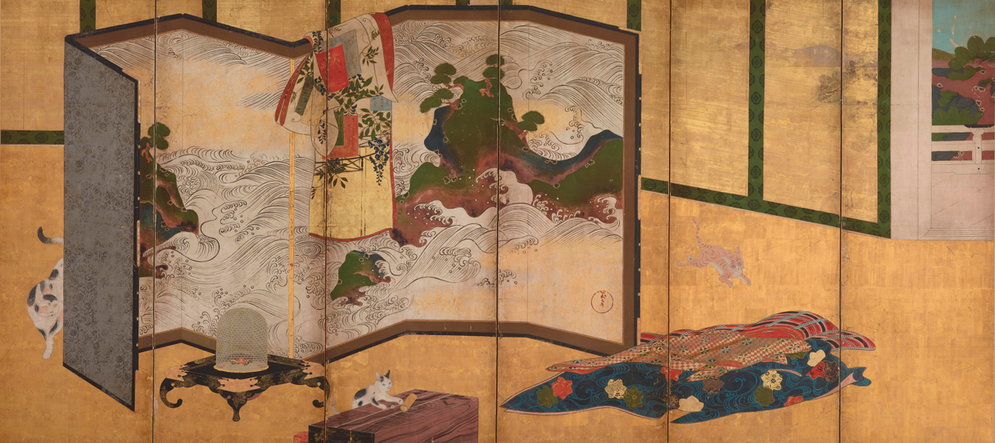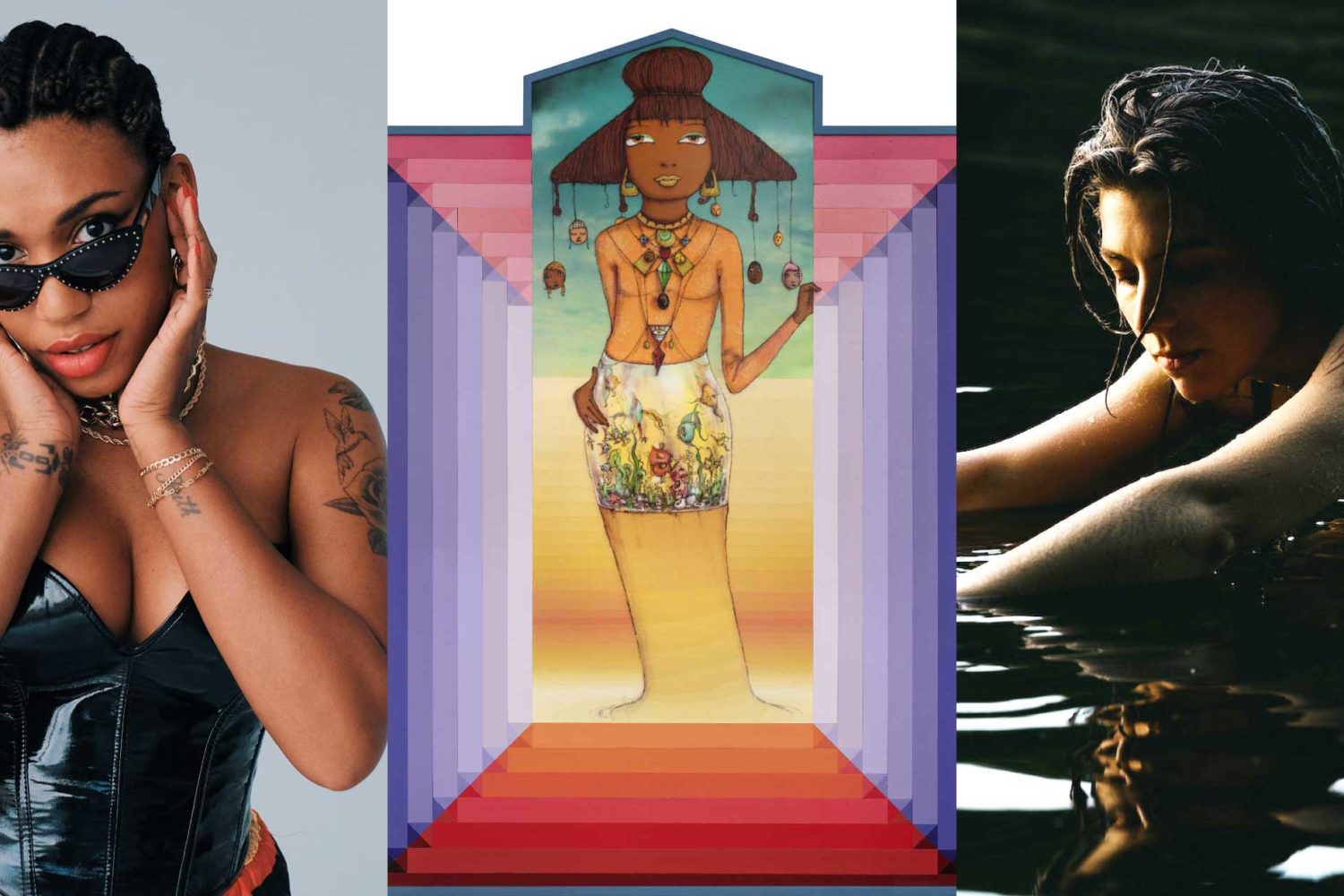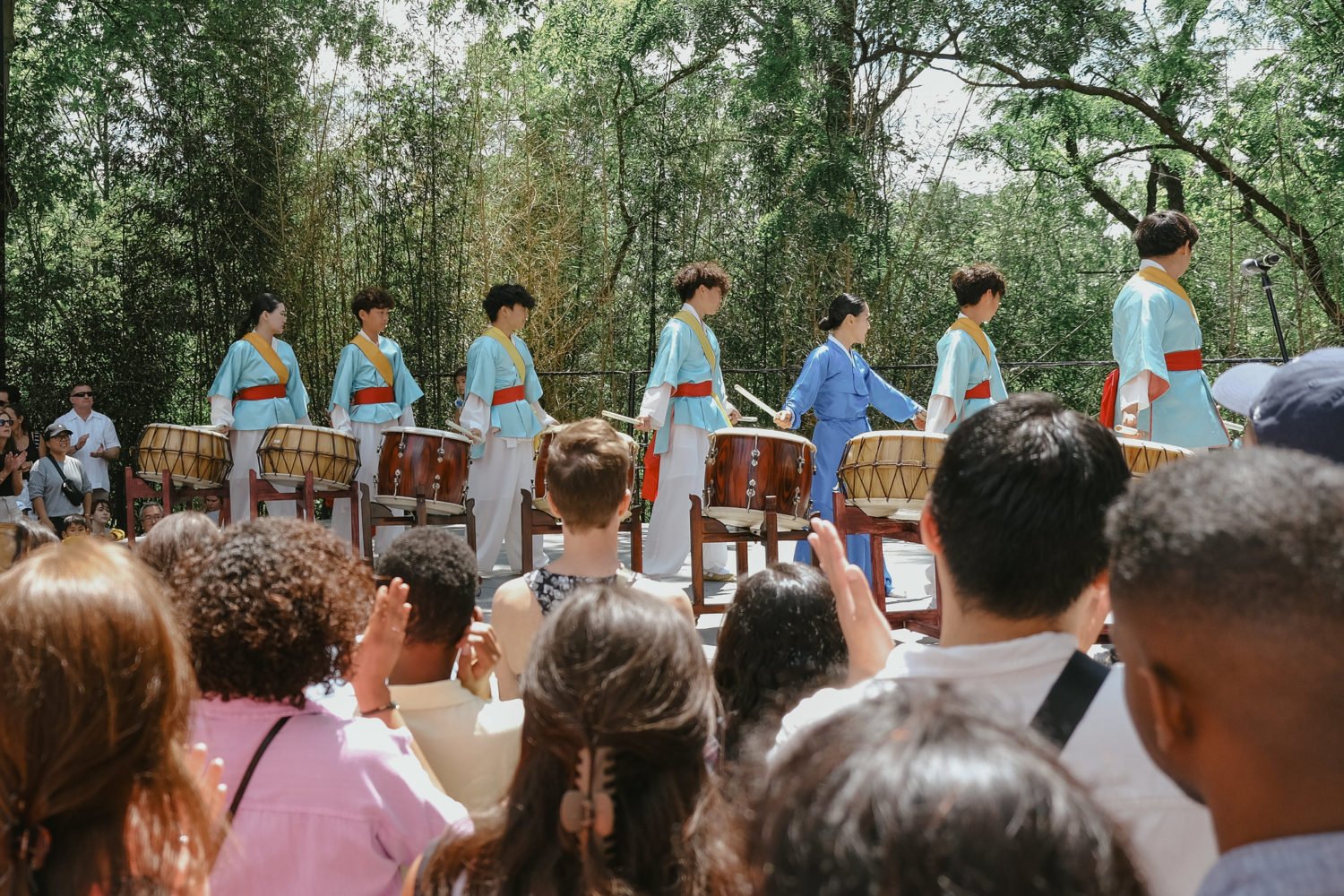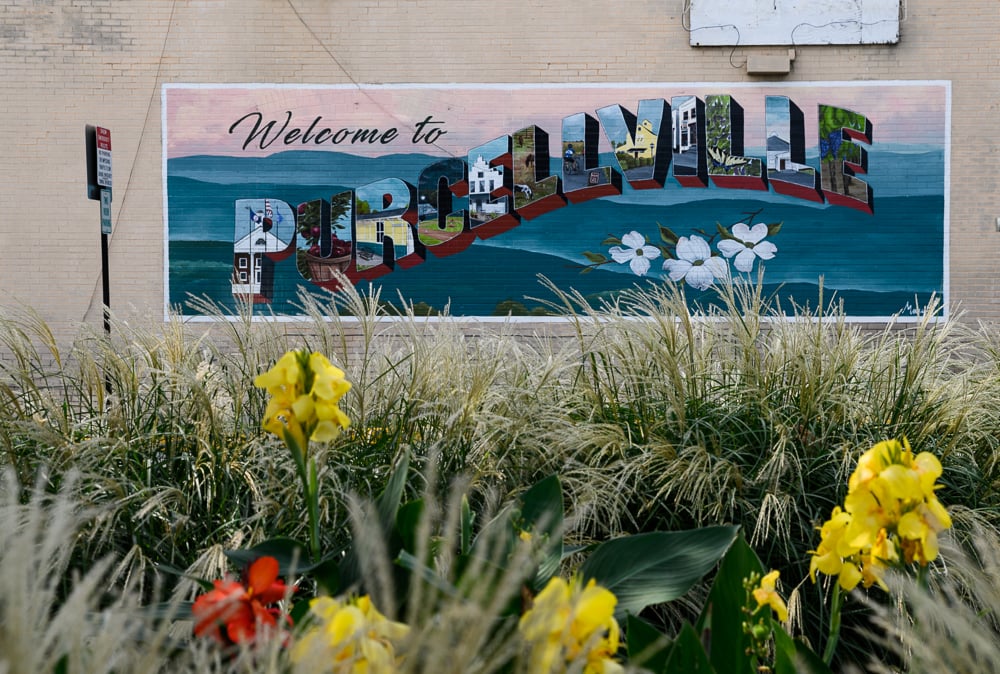Know this: Every time you sigh at the sight of Hokusai’s “The Great Wave,” an artist named Tawaraya Sōtatsu stirs in his grave. For hundreds of years, while scholars wrote volume after volume about Hokusai, Sōtatsu was almost completely ignored. But it was actually his decorative style, created in 17th-century Kyoto, that set the course for the next 400 years of Japanese art.
The story of Sōtatsu’s ascent and eventual eclipse began around 1600, when Japan experienced a significant societal shift and birthed a more fluid class hierarchy. A new class of warriors of merchants emerged, craving the art that had once belonged to royalty and the wealthy. Sōtatsu, a Kyoto fan shop owner, hawked fan paintings to this newfound social class. By the 1620s, he had cultivated relationships with aristocrats and received commisions to paint ambitious multi-paneled, gold-tinted screens. He pioneered a painting technique called tarashikomi by placing ink on a still-wet background, resulting in abstract, dynamic shapes and vibrant colors.
Despite his inventive style, for hundreds of years after his death, his contributions to Japanese art were credited to other artists who had adapted his style, like the the painter Ogata Kōrin. That changed in the early 1900s, when American art collector Charles Lang Freer unearthed the truth about Sōtatsu and purchased some of the artist’s screens.
For that, Freer is now considered a cultural pioneer—Japan even erected a monument in his honor. “Sōtatsu is the least well-known but perhaps most influential Japanese artist,” says James Ulak, senior curator of Japanese art at the Freer and Sackler Galleries.
Sōtatsu’s works affected more than the course of Japanese art: Gustav Klimt and Henri Matisse both turned to Sōtatsu for inspiration. That’s why, if Freer’s screens had remained in Japan, Ulak says, they’d have been declared national treasures.
But that’s never going to happen: In his will, Freer stipulated that the pieces could never travel outside his DC museum, thus making this retrospective of more than 70 works, which opened on October 24 at the Sackler, a once-in-a-lifetime exhibit.
The black-walled retrospective includes Freer’s stunning, six-panel, “Waves at Matsushima,” and “Dragons and Clouds,” a black-and-white ink painting of two dragons. “If you’re going to do a major show, it has to happen here,” Ulak says.


















